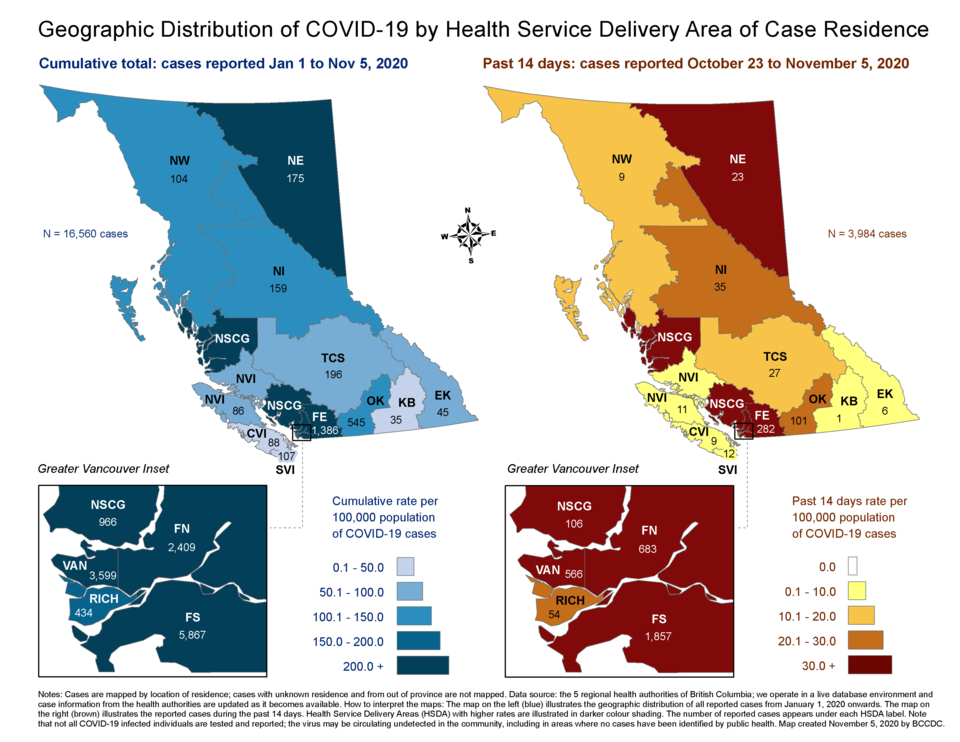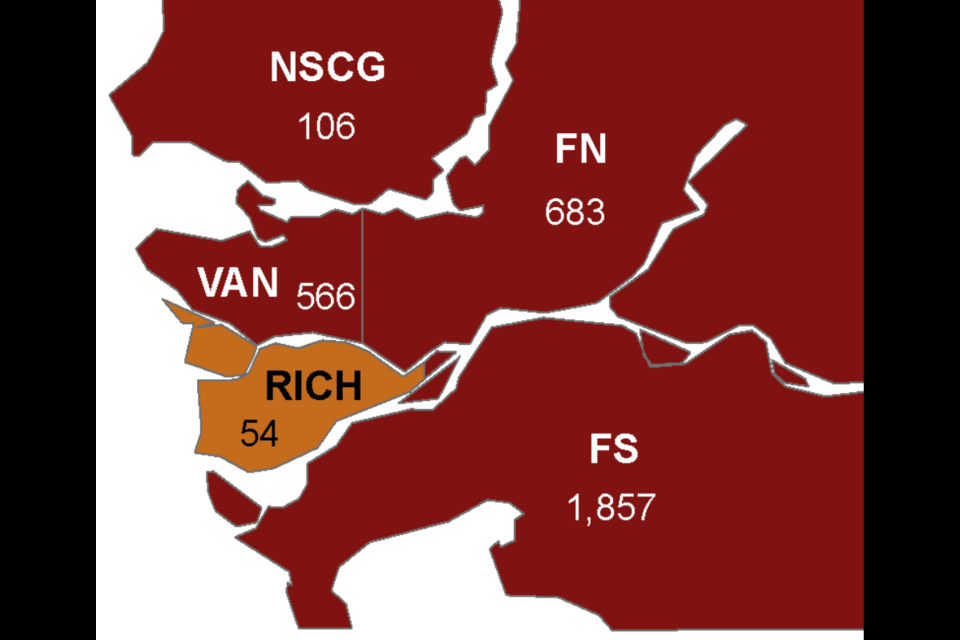The Tri-Cities’ health delivery area has reported 395 cases of COVID-19 in the past week, a 17% increase over the previous week and enough to nudge the region past Vancouver’s weekly caseload by a margin of five cases.
The Fraser North health delivery area — which in addition to the Tri-Cities, includes Burnaby, New Westminster and Maple Ridge — has now registered 2,409 cases since in January.
Of that total, nearly a third of the cases (683) have been reported over the last two weeks, leading to the highest caseload over a two-week surveillance period since the start of the pandemic.

The growing numbers come amid a flurry of publicly acknowledged COVID-19 cases in the Tri-Cities, including growing outbreaks at three seniors homes, a number of exposures at schools, a handful of public exposures at Tri-City restaurants, and clusters at a Port Coquitlam yoga studio and construction site, among others.
But the biggest source of transmission remains private households, where even small celebrations have led to deadly consequences and rapid community spread, according to Fraser Health deputy medical health officer Dr. Elizabeth Brodkin.
Fraser Health is now firmly the epicentre of the pandemic in B.C. On Wednesday, the health authority reported 7.4% of test samples came back positive, more than double the per cent positivity of Vancouver Coastal Health. That’s above the 5% threshold the World Health Organization warned governments to maintain for at least two weeks before reopening from a lockdown in the spring.
The positivity rate is an important metric for understanding how widespread the transmission of the virus is in the community, and if testing is keeping up with rising caseloads.
But while that number has seen a month-long upward trajectory in Fraser Health, health officials say in many settings, robust contact tracing and health and safety protocols have kept the transmission of the virus in check.
"Obviously, we’re concerned,” said Dr. Brodkin Wednesday. “What we’re seeing in our independent and assisted living, and in our long-term care facilities, just as what we’re seeing in our schools, reflects the number of cases in the community.”
Dr. Brodkin stressed that the health authority has “no plans to close our schools” and that they remained “relatively safe places in the scheme of things.”
“We have seen a very significant number of exposures in our schools but those are only exposures and very few of them have gone on to result in transmission,” she said.



